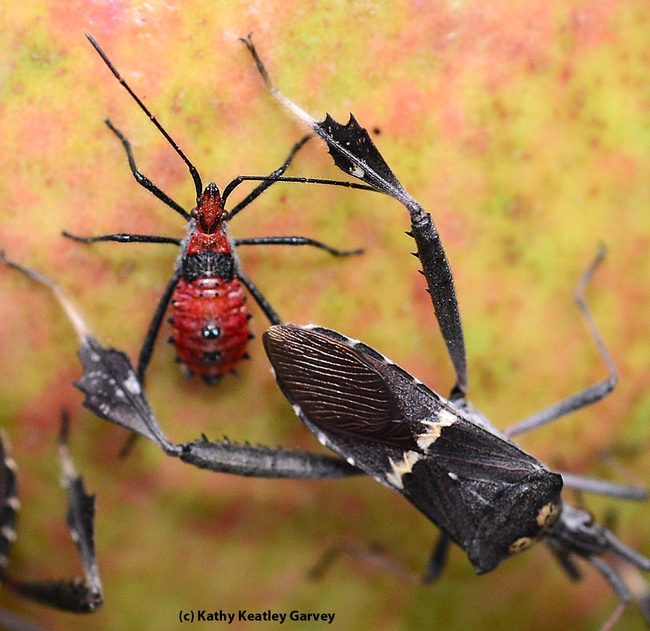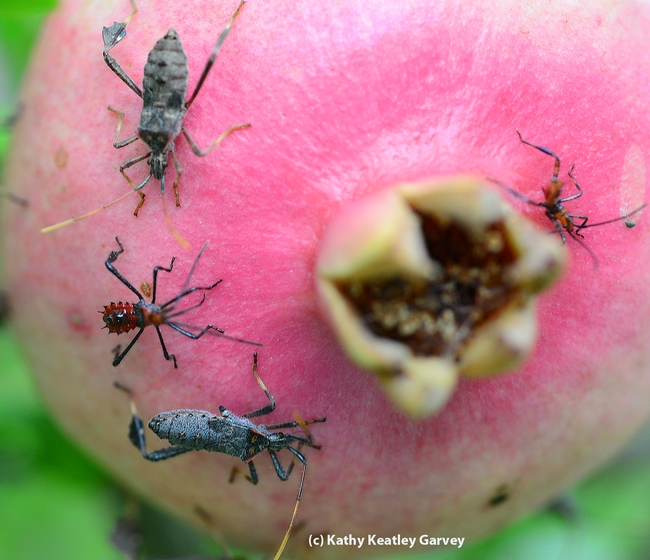It's easily missed because it's only a fraction of an inch long.
But the color--a brilliant red--is right there. It's a little difficult to see on a red pomegranate, but it's there.
What's there? The nymph of a leaffooted bug (Leptoglossus zonatus).
The adults, or seed feeders, do what bugs do--eat and mate, mate and eat, and then eat and mate some more. They lay eggs that hatch into little red nymphs. The nymphs don't look at all like their parents, which are brown with a white zigzag across the back. Neither do the nymphs have flattened, leaflike tibias.
These red nymphs, however, probably don't get disturbed much. The color, red, is a warning color or aposematism, that is, it warns predators that "I'm dangerous," "I'm toxic," "I'm bitter-tasting" and "If you eat me, you'll be sorry." It's a defense mechanism found throughout the animal world.
Check out the warning coloration in ladybugs (aka lady beetles), scarlet lily beetles, redback spiders, red palm mites, chiggers, red velvet ants or red velvet wasps, milkweed bug nymphs and black widow spiders (the blood-red hourglass on its back).
Red.
Then look at the oh-so-tiny nymphs of the leaffooted bug.
Red.
Red as a sparkling ruby.
Attached Images:

